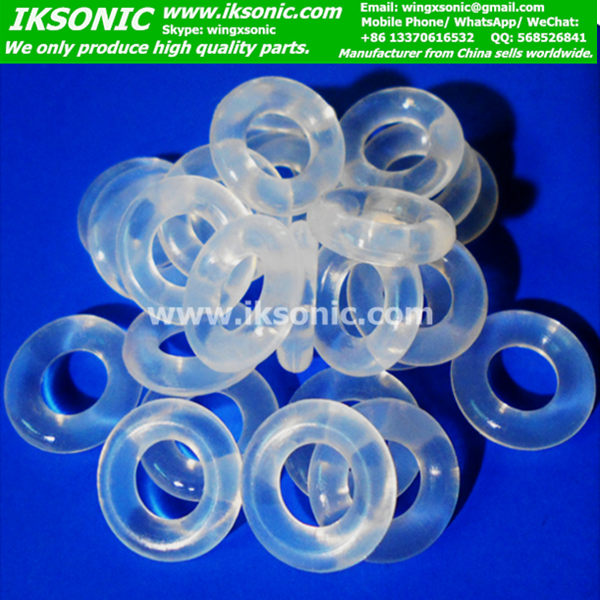The Silicone O Ring (MQ, VMQ, PVMQ) material description
Physically, silicone O-rings are based on silicon, an element derived from quartz. To make such synthetic elastomers, organic side groups (such as methyl, phenyl, and vinyl) are attached to silicon atoms. Different additions of side chains can achieve significant changes in properties. Silicone O-rings have excellent heat resistance, ozone resistance and corona resistance, and have good dielectric stability and resistance to a variety of oils, chemicals and solvents. Silicone O-rings maintain optimal flexibility at low temperatures, but have low tensile strength and low wear resistance.
Silicone O-rings may also exhibit detectable metal changes while retaining the same mass as ordinary silicone O-ring compounds. IKSONIC O-rings and seals offer food grade FDA-compliant silicone O-rings for use in food and beverage production lines as well as medical and pharmaceutical production. Both silicone and metal-detectable silicone O-rings comply with food grade FDA regulations.

Curing system: peroxide curing
Standard silicone O-rings are usually cured with peroxide. Platinum-cured compounds have better flexibility and extremely low volatility. Platinum-cured silicone O-rings are commonly used in medical systems or other required low-volatile materials. However, they need to be produced in a clean room, and platinum catalysts are more expensive, which makes them more expensive than peroxide-cured catalysts.
Silicone O ring temperature range:
Standard low temperature: -60 ° C (-76 ° F)
Standard high temperature: 225 ° C (437 ° F)
Specification table: Silicone 20 to 70 hardness Shore A Durometer
Specification Sheet: Silicone 20 to 70 Hardness Shore A Durometer -Detects Metals and X-Rays
